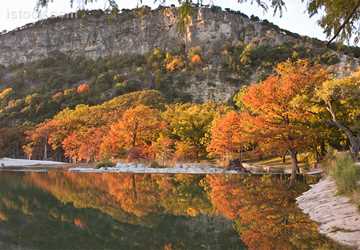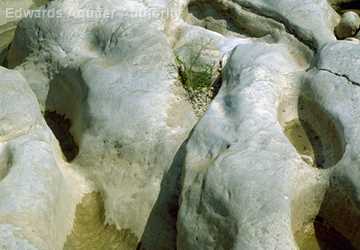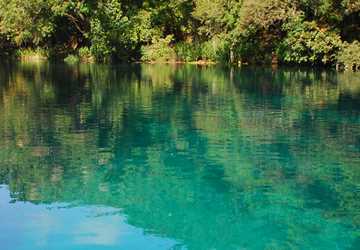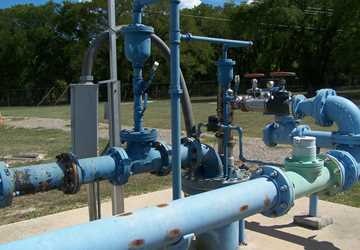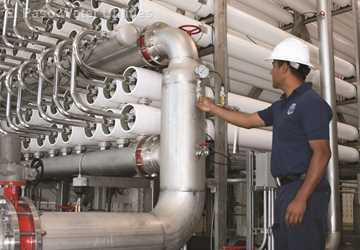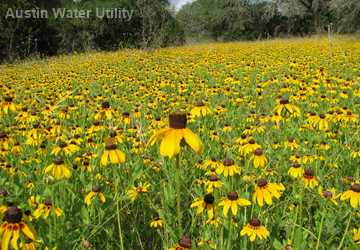Science of groundwater
Aquifer: Aquifers are geological formations that can store, transmit and yield groundwater to a well or spring.Groundwater comes from nine major and 21 minor aquifers in Texas.
Aquifer storage and recovery (ASR): A type of water management system, ASR is generally defined as the deliberate recharge and temporary storage of excess water in an aquifer with the intent of recovering the water for future use.
Brackish groundwater: A type of naturally occurring salty groundwater, brackish groundwater contains dissolved solids measured in units of milligrams per liter. Water can be classified as fresh (less than 1,000 milligrams per liter), brackish (1,000–10,000 milligrams per liter) and saline (greater than 10,000 milligrams per liter). For comparison, seawater contains approximately 35,000 milligrams per liter of total dissolved solids.
Confined aquifer: A confined aquifer is a layer of groundwater under pressure held between two layers of impermeable rock. The recharge area is limited to the land surface where the aquifer’s geologic material is exposed to the surface, perhaps long distances from the pumping location.
Permeability: Permeability is a material’s ability to allow fluids to pass through it. Permeable materials, such as gravel and sand, allow water to move quickly through them, whereas impermeable material, such as clay, doesn’t allow water to flow freely.
Recharge: Recharge is the process by which water is added to a groundwater source, typically by percolation through the soils.
Unconfined aquifer: An unconfined aquifer has a confining layer of impermeable rock at its base and a layer of permeable geologic strata and/or permeable soil above it. The recharge area is all of the land area above the unconfined aquifer.
Groundwater administration
Desired future condition (DFC): A DFC is the desired, quantified condition of groundwater resources (such as water levels, spring flows or volumes) within a management area at one or more specified future times as defined by participating groundwater conservation districts (GCDs) within a groundwater management area (GMA) as part of the joint planning process.
Groundwater availability model (GAM): AGAM estimates future trends in the amount of groundwater available in an aquifer. GAMs include comprehensive information on each aquifer, such as recharge; geology and how that conveys into the framework of the model; rivers, lakes and springs; water levels; aquifer properties; and pumping. The Texas Water Development Board (TWDB) is responsible for the GAM program. These models are important tools for GCDs and regional water planning groups to use in their management and regional water plans.

Groundwater conservation district (GCD): A GCD is a local unit of government authorized by the Texas Legislature and ratified at the local level to manage and protect groundwater. There currently are 99 confirmed GCDs in Texas. Texas law authorizes GCDs to modify the rule of capture by regulating groundwater production through permitting of non-exempt water wells, well spacing requirements and other rules.
Groundwater management area (GMA):A GMA is an area delineated and designated by TWDB for joint planning and managing groundwater resources. Each area is comprised of individual groundwater conservation districts. The decisions for current GMAs include groundwater availability using data collected from regional member districts and defining the quantity of allowed groundwater production.
Groundwater management plan: A groundwater management plan describes a district's groundwater management goals. These goals include providing the most efficient use of groundwater, controlling and preventing groundwater waste and subsidence, and addressing conjunctive surface water management issues, natural resource issues, drought conditions, conservation and groundwater recharge and desired future aquifer conditions.
Modeled available groundwater (MAG): A MAG is the amount of groundwater production, on an average annual basis, that will achieve a desired future condition. The desired future condition in a specific location may not be achieved if pumping quantities exceed the MAG volume long term.
Regional water planning groups: As part of the state water planning process in Texas, 16 planning groups, representing a variety of interests, develop a regional water plan. All of the regional water plans are compiled to help develop the state water plan. The latest state plan was adopted in 2012.
Water Data for Texas: Compiled by TWDB, the website contains groundwater data as well as information on reservoir levels and drought. It includes data from TWDB’s Recorder Well Program as well as U.S. Geological Survey and Edwards Aquifer Authority networks.
Agencies involved in groundwater
Edwards Aquifer Authority (EAA): EAA is a political subdivision of Texas that was established by the 73rd Legislature with the passage of the Edwards Aquifer Authority Act to manage, enhance and protect the Edwards Aquifer system. EAA participates in the Region L water planning group and is a member of GMAs 7, 9, 10 and 13. The EAA has regulatory jurisdiction in all of Bexar, Medina and Uvalde counties and portions of Atascosa, Caldwell, Comal, Guadalupe and Hays counties.
Railroad Commission of Texas: The commission is the lead agency regulating the oil and gas industry. It regulates or is responsible for the disposal of oil and gas wastes by injection, the injection of fluid for enhanced oil recovery, and the underground storage of hydrocarbons; the surface storage and disposal of oil and gas wastes, brine retention facilities associated with brine mining and underground hydrocarbon storage; oil-field cleanup, which is regulated by statewide rules and special orders; and groundwater contamination caused by oil and gas. Its groundwater advisory unit helps ensure that oil and gas do not mix with groundwater by providing technical assistance about surface casing requirements.
Texas Commission on Environmental Quality (TCEQ): TCEQ performs groundwater quality planning and assessments; supports the interagency Texas Groundwater Protection Committee and the Texas Groundwater Protection Strategy; and manages the state's plan for preventing groundwater pollution from pesticides and the state’s program for the identification of priority GMAs. It conducts regulatory groundwater protection programs that focus on the prevention of contamination and the identification, assessment and remediation of existing problems. It maintains a water well database.
Texas Department of Licensing and Regulation (TDLR): TDLR regulates the construction of wells and the licensing requirements for water well drillers and pump installers. Water well drillers must submit drilling logs and other required information to TDLR and TWBD. The completion and plugging of such wells must comply with TDLR regulations. Local GCDs have the authority to enforce the plugging regulations for abandoned or deteriorated water wells within their boundaries.
Texas Groundwater Protection Committee (TGPC): Working asan interagency committee, TGPC develops a comprehensive groundwater protection strategy that coordinates the activities of all the participating agencies and entities represented on the TGPC and documents what needs to be done to protect groundwater in Texas. The strategy includes guidelines for prevention of contamination and conservation of groundwater.
Texas Water Development Board (TWDB): TWDB’s Groundwater Resources Division collects, interprets and provides accurate, objective information on the groundwater resources of Texas. It monitors groundwater levels and groundwater quality in nine major and 21 minor aquifers, conducts regional-scale groundwater modeling, and houses and maintains water well records. It also reviews and approves groundwater management plans and participates in the establishment of DFCs of aquifers in GMAs. Geologists and hydrologists with the Groundwater Resources Division also conduct investigations of aquifer and groundwater conditions to support the needs of citizens, policy makers and lawmakers of the state.
Many of the definitions for these terms were taken from a Texas Well Owner Network publication and the websites of the Texas Water Development Board, Texas Commission on Environmental Quality and other organizations.


